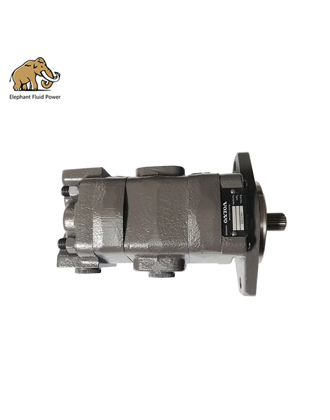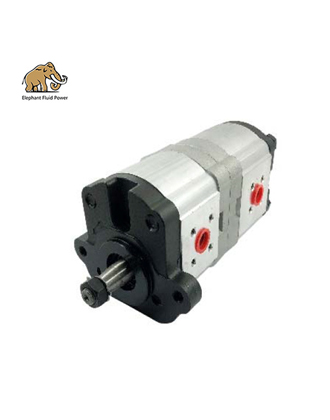Hydraulic directional valve has accurate action, high degree of automation, stable and reliable work, and is widely used in petroleum, chemical, mining and metallurgical industries.
The main performance of hydraulic directional valves
1. Work reliability
It refers to whether the electromagnet can be reliably commutated after power-on, and whether it can be reliably reset after power-off. Solenoid valves can only work normally within a certain flow and pressure range. The limit of this operating range is called the commutation limit.
2. Pressure loss
Due to the small opening of the solenoid valve, a large pressure loss occurs when the liquid flows through the valve port.
3. Internal leakage
In different working positions, under the specified working pressure, the leakage from the high-pressure cavity to the low-pressure cavity is the internal leakage amount. Excessive internal leakage will not only reduce the efficiency of the system, but also cause overheating. It will also affect the normal operation of the implementing agencies.
4. Commutation and reset time
The reversing time of the AC solenoid valve is generally 0.03~0.05s, and the reversing impact is large: while the reversing time of the DC solenoid valve is 0.1~0.3s, the reversing impact is small. Usually the reset time is slightly longer than the commutation time.
5. Commutation frequency
The reversing frequency is the number of reversing times the valve is allowed per unit time. At present, the reversing frequency of the solenoid valve of the solenoid is generally 60 times/min.
6. Service life
The service life of solenoid valves depends mainly on the solenoid. Wet electromagnets have a longer life than dry ones, and DC electromagnets have a longer life than AC ones.
7. Hydraulic clamping phenomenon of spool valve
The hydraulic clamping phenomenon of the spool valve is not only in the reversing valve, other hydraulic valves are also prevalent, more prominent in the high-pressure system, especially the longer the residence time of the spool valve, the greater the hydraulic clamping force, so that the thrust of the mobile spool valve (such as solenoid thrust) can not overcome the clamping resistance, so that the spool valve can not be reset. The reasons for hydraulic clamping are that it is difficult for the valve core to move due to dirt entering the gap, and some are due to the small gap and the valve core expands and jams when the oil temperature rises, but the main reason is the radial unbalanced fluid pressure caused by the geometry error and concentricity change of the spool valve. In order to reduce the radial unbalanced force, the manufacturing accuracy of the valve core and the valve bore should be strictly controlled, and when assembling, it should be made into a conical form as much as possible, on the other hand, the annular equalization groove is opened on the cutting core, which can also greatly reduce the radial unbalanced force.
If you have a need for hydraulic directional valves, please lock Elephant Fluid Power, we not only have the best quality products, but also the most efficient after-sales service, which will definitely let you buy with confidence and use comfortably.
Hydraulic directional valve diagram
Hydraulic directional valve troubleshooting
Hydraulic directional valve symbols
Hydraulic directional control valve types
 French
French
 Portuguese
Portuguese
 Russian
Russian
 German
German
 Spanish
Spanish
 Japanese
Japanese
 Korean
Korean
 Irish
Irish
 Greek
Greek
 Turkish
Turkish
 Italian
Italian
 Danish
Danish
 Romanian
Romanian
 Indonesian
Indonesian
 Czech
Czech
 Afrikaans
Afrikaans
 Swedish
Swedish
 Polish
Polish
 Basque
Basque
 Catalan
Catalan
 Esperanto
Esperanto
 Hindi
Hindi
 Lao
Lao
 Albanian
Albanian
 Amharic
Amharic
 Armenian
Armenian
 Azerbaijani
Azerbaijani
 Belarusian
Belarusian
 Bengali
Bengali
 Bosnian
Bosnian
 Bulgarian
Bulgarian
 Cebuano
Cebuano
 Chichewa
Chichewa
 Corsican
Corsican
 Croatian
Croatian
 Dutch
Dutch
 Estonian
Estonian
 Filipino
Filipino
 Finnish
Finnish
 Frisian
Frisian
 Galician
Galician
 Georgian
Georgian
 Gujarati
Gujarati
 Haitian
Haitian
 Hausa
Hausa
 Hawaiian
Hawaiian
 Hebrew
Hebrew
 Hmong
Hmong
 Hungarian
Hungarian
 Icelandic
Icelandic
 Igbo
Igbo
 Javanese
Javanese
 Kannada
Kannada
 Kazakh
Kazakh
 Khmer
Khmer
 Kurdish
Kurdish
 Kyrgyz
Kyrgyz
 Latin
Latin
 Latvian
Latvian
 Lithuanian
Lithuanian
 Luxembourg
Luxembourg
 Macedoniar
Macedoniar
 Malagasy
Malagasy
 Malay
Malay
 Malayalam
Malayalam
 Maltese
Maltese
 Maori
Maori
 Marathi
Marathi
 Mongolian
Mongolian
 Burmese
Burmese
 Nepali
Nepali
 Norwegian
Norwegian
 Pashto
Pashto
 Persian
Persian
 Punjabi
Punjabi
 Serbian
Serbian
 Sesotho
Sesotho
 Sinhala
Sinhala
 Slovak
Slovak
 Slovenian
Slovenian
 Somali
Somali
 Samoan
Samoan
 Scots Gaelic
Scots Gaelic
 Shona
Shona
 Sindhi
Sindhi
 Sundanese
Sundanese
 Swahili
Swahili
 Tajik
Tajik
 Tamil
Tamil
 Telugu
Telugu
 Thai
Thai
 Ukrainian
Ukrainian
 Urdu
Urdu
 Uzbek
Uzbek
 Vietnamese
Vietnamese
 Welsh
Welsh
 Xhosa
Xhosa
 Yiddish
Yiddish
 Yoruba
Yoruba
 Zulu
Zulu







